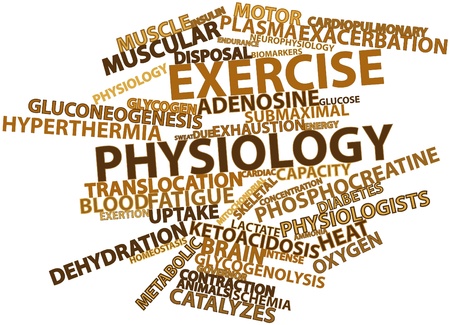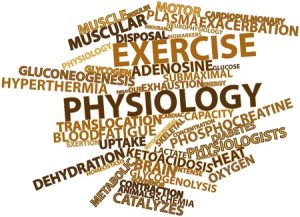
Adenosine Triphosphate is present in every living cell of the body. It is also available as a dietary supplement. Each year, the supplementation industry spends millions of dollars on researching the best way for athletes to gain that highly coveted competitive edge…but can one truly manipulate the body’s energy pathways?

It’s not up to personal trainers to recommend dietary supplements to their clients, but education is well within our scope of practice.
Adenosine and the ATP Equation
Adenosine is a naturally occurring extracellular signaling molecule that facilitates essential functions in human biology and physiology. From providing the backbone for basic energy transfer to its role in cell signaling, adenosine has such far-reaching effects as inducing vasodilation, regulating activity in the sympathetic nervous system, and reducing blood pressure and heart rate. Such properties are some of the reasons why adenosine and its derivatives are implemented in many therapeutic areas.
Adenosine forms from the breakdown of adenosine triphosphate (ATP), the primary energy source in cells. Chemically, ATP is an adenine nucleotide bound to three phosphates. An abundance of potential energy is stored within the bond between the second and third phosphate groups; this energy can be harnessed to fuel chemical reactions.
When a cell needs energy, it breaks this bond to form adenosine diphosphate (ADP) and a free phosphate molecule. In some instances, the second phosphate group can also be further broken down to form adenosine monophosphate (AMP). When a cell possesses excess energy, it stores this energy by forming ATP from ADP and phosphate.
Can Additional Adenosine Affect Performance?
Since ATP is required for the biochemical reactions involved in any muscle contraction, increased amounts of ATP get consumed during periods of high muscular demands, such as vigorous exercise, and must be replaced in order for the muscles to keep moving.
To facilitate this process, adenosine contributes to the regulation of skeletal muscle blood flow by stimulating prostaglandin and nitric oxide synthesis. By influencing the regulation of angiogenesis (the physiological process through which new blood vessels form from pre-existing vessels), adenosine may exert a significant effect on the body’s adaptation response to exercise.
Various popular training methods, such as cycling and interval training, may increase adenosine levels and thereby might enhance the response of adenosine-influenced adaptive mechanisms.
Interval training seems to offer the greatest opportunity for elevated adenosine to occur. Adenosine production is dependent upon energy and stress level, and the rate at which ATP is utilized. Since this phenomenon occurs during bouts of interval training, such adenosine-induced adaptations over time may enhance exercise performance.
What is Occurring on a Cellular Level?
Mitochondria are the human body’s “furnaces”, responsible for producing the energy necessary for all movement and biological processes. These powerhouses, located within cells, convert carbohydrates (glucose, in their most elemental form) to adenosine triphosphate (ATP). Often thought of as a molecular “unit of currency” for intracellular energy transfer, ATP enables our cells to perform an expansive array of functions.
As one might imagine, ATP and athletic performance are closely related. ATP provides the energy required for muscle contractions, blood circulation and cardiac function, and generally fuels the body for whatever it may be doing at any given point in time.
A dedicated elite athlete repeatedly dips into his ATP sources day after day, week after week. Without a sufficient means of replenishing this stock, the energy well begins to run dry. This situation clearly leads to a loss in athletic performance, since the athlete is rendered incapable of performing optimally if his “engine” doesn’t have fuel.
The Role of Nutrition in Energy Production
The human body produces ATP through the daily consumption of nutrients. However, many internal and external factors exist in our world that may hinder the amount of nutrients our bodies are able to absorb and utilize. Stress, certain medications, pesticides sprayed on food sources as they grow, and gut flora imbalances are just a few examples of what might interfere with ideal ATP production.
Supplemental Success?
As mentioned above, athletes whose metabolic processes must perform at an optimal level every day need a diet that includes easily absorbed vitamins, minerals, trace nutrients, and high-quality proteins. Foods in their natural, unprocessed state can be broken down into highly bio-available nutrients and building blocks.
When such a pristine diet is unavailable, some athletes turn to supplementation to gain – or maintain – a competitive edge. A research study done on one such supplement revealed that it produced a desirable increase in both ATP and athletic performance. Participants who ingested the product twice a day for three months showed increases in ATP of more than 180% compared to baseline.
The inferred supposition is that the availability of more high-quality building blocks enables athletic training to influence the formation of new mitochondria. If the body’s mitochondrial system is functioning optimally, and the number of mitochondria is concurrently increasing, available oxygen is also being utilized to the best of its natural ability. This results in a boost in performance even without any additional training.
As is so often the case in scientific research, results are not always comparable from product to product. Adenosine-5′-Triphosphate Disodium is a common pre-workout supplement which claims to improve blood flow and training performance. However, as opposed to the research study referenced above, the majority of studies performed on this product, even at doses larger than what are typically found in popular pre-workout supplements, revealed little or no benefit to athletic performance.
Strength versus Endurance
Researchers did find that supplemental ATP tended to improve muscular endurance, enabling the athlete to complete a strength -training workout comprised of multiple, lengthy sets. This finding seems to shed a positive light on the idea that there might be a little boost to recovery and/or mechanisms like increased blood flow.
Less stellar improvements in strength are likely due to the fact that the breakdown of ATP outside of the cells occurs quite rapidly. Since such degradation frees up molecules of adenosine, which we have learned possesses the potential to improve blood flow, it could be reasoned that it is the adenosine alone jump-starting the performance improvements.
Taking an overall view of this study’s results, the blood and cellular chemistries between those participants taking ATP and those in the placebo group weren’t significantly different; the slight alterations observed were negligible and therefore not enough to account for any improved athletic performance.
During my years as a competitive bodybuilder, my Coach recommended a number of supplements to me, all of them natural and available at an average drugstore or GNC-type retailer. Aimed largely at facilitating recovery as well as enabling the body to more easily draw upon nutrients consumed through food, I definitely supported this industry, and I did have a successful competitive career.
The question as to how influential these products were in that success will always play in my mind, and apparently, even in-depth research can see both pros and cons. Presenting both sides of the coin to clients considering embarking upon this route will help them forge a stronger, more confident trust bond with you, as a trainer as well as a person!
[info type=”facebook”]Join the Facebook Community Group to mingle with other trainers. [/info]
References
- https://www.ncbi.nlm.nih.gov/pmc/articles/PMC1478982/
- http://hyper.ahajournals.org/content/hypertensionaha/53/6/993.full.pdf
- http://bjsm.bmj.com/content/bjsports/26/1/54.full.pdf
- https://health.howstuffworks.com/wellness/diet-fitness/exercise/sports-physiology2.htm
- https://www.ncbi.nlm.nih.gov/pmc/articles/PMC2654584/
- https://www.sciencedirect.com/science/article/pii/S1936879814006323
- http://www.cvpharmacology.com/antiarrhy/adenosine
- http://circres.ahajournals.org/content/circresaha/62/4/846.full.pdf
- https://www.regulat-usa.com/blog/atp-and-athletic-performance-recovery-for-athletes/
- https://breakingmuscle.com/healthy-eating/atp-supplementation-does-it-work






